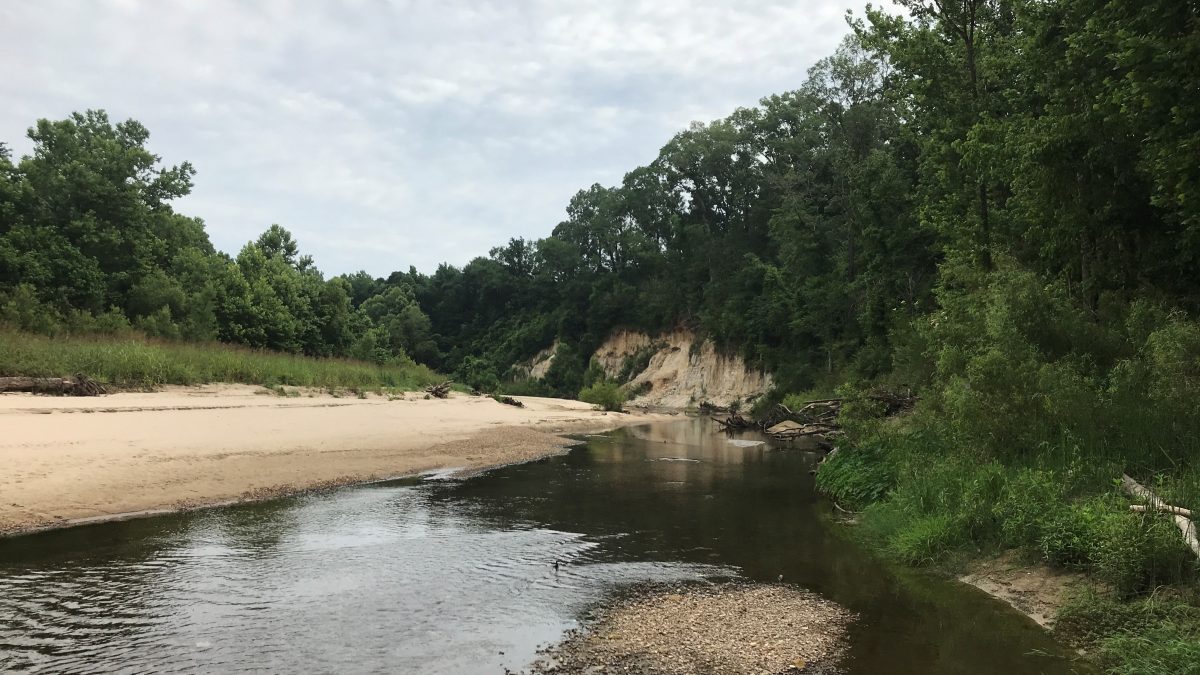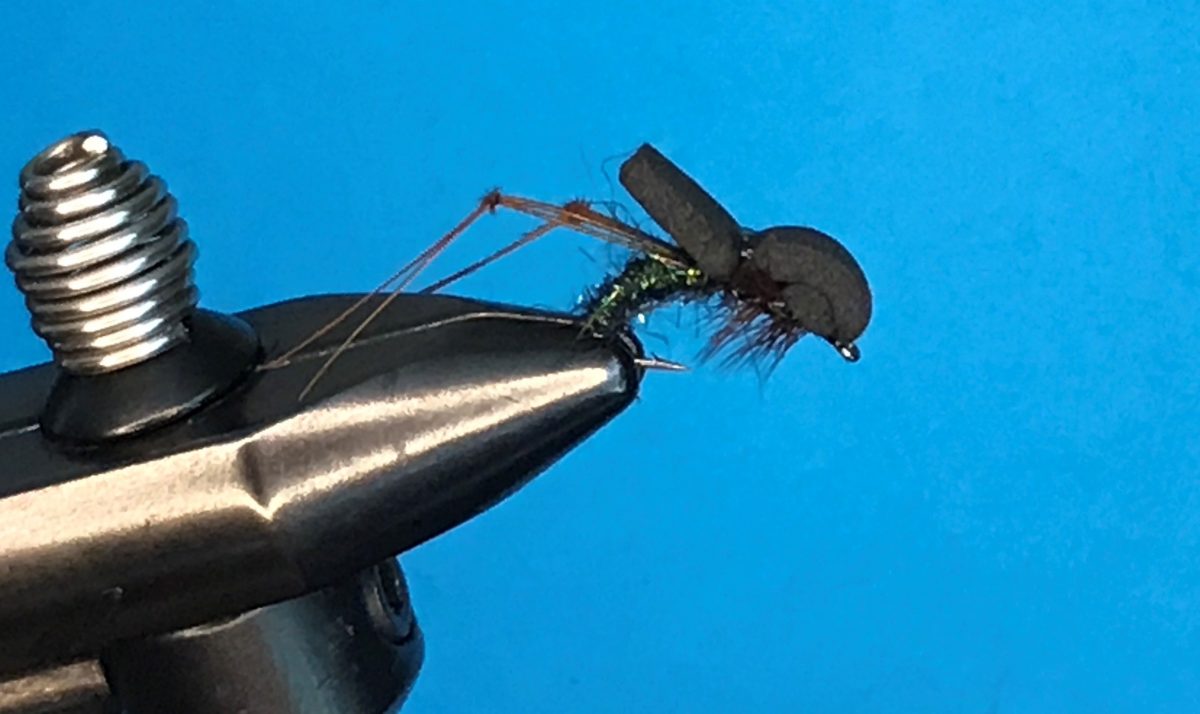
The concept of a “Half-drowned” grasshopper imitation has remained in the back of my mind since returning from a trip to Colorado in July of 2018. These terrestrials (along with ants and beetles) are clearly a staple for trout in the summer months, but, in certain instances, high floating dry imitations elicit only refusals. Curious if a pattern riding lower in the surface film might trigger more strikes, I began experimenting. The outcomes were less than ideal (as is the case with many experiments) and, after a while, I moved on to other projects.
Recently, however, my interest in the project was reinvigorated as I was introduced to a pattern known as the Moodah Poodah. An attractor pattern with bright orange hot spot and silly legs, the Moodah Poodah diverged from the plethora of other foam attractor patterns in it’s use of a klinkhammer-style hook. In doing so, it allowed a portion of the fly (including the bright orange hotspot) to trail below the surface of the water. Exactly what I was hoping to achieve with my “Half-drowned” Hopper.
Aiming for a more accurate representation of the natural, I sat down at the vise and began designing a rudimentary grasshopper on a size 14 Klinkhammer hook. The outcome was a simplistic foam and dubbing creation with knotted pheasant tail legs and brown hackle extending from the thorax. Though still far from perfect, I was satisfied and ready to give it a trial run…

Armed with my new creations, I rose early on the morning of June 2nd, loaded my truck, and headed north in search of clear, flowing water. Carrying a variety of mini crease flies, smaller poppers, and nymphs in addition to my newly created hoppers, Spotted Bass and Longear Sunfish were the morning’s target.
Though overcast, temperatures had already surpassed 80 F when I arrived at my start point shortly before 8 AM. With a projected high of 89 F, and Louisiana humidity pushing the heat index to the mid-90s, I knew I would be limited to only a few hours on the water.
After a few searching casts with a mini crease fly below the bridge, I switched to a “Half-drowned” Hopper and made my way upstream.

Making my way upstream, I began prospecting at random. However, it quickly became clear that 90+% of the river was too shallow to bother with. Though I did see the occasional small bass dart through the shallow runs, the majority of fish congregated in deep bends and small pools created as the current worked its way around log jams.

Shallow, clear and generally free of shoreline obstructions to shield me from view, the need for stealth became apparent early on as I spooked countless fish with an errant false cast or shadow. Eventually though, bites began to come as I maintained a low profile and limited/eliminated my false casts over each hole.
A small Longear Sunfish was the first fish to net. Taken as I dead drifted the hopper between fallen logs.

Working further upstream, a particularly deep hole along a washed out bank caught my attention. Though I inadvertently spooked the two large spotted bass at the tail end of the hole, I attempted a few casts towards the head of the pool as I passed.
Twitching the fly as it landed to avoid snagging (the hazards of an errant cast), resulted in an explosive strike from a tiny Green Sunfish (a lifer for me!) and motivated me to add some action to my retrieve as I continued up stream.

Alternating between dead drifts and intermittent twitches, I proceeded to work my way upstream and quickly landed my third sunfish species of the morning as an unexpected Bluegill engulfed the hopper.

Eventually, I made my way to a bend in the river with perhaps 20-30′ of fishable water along the side of a fallen log. A small pool by most standards, it was the best habitat I had encountered, and I spent at least half an hour working every inch of it.
By the time I moved on, my fish count was pushing fifteen with Spotted Bass, Longear Sunfish, Green Sunfish and Bluegill all gracing my net.


The sun now beating down, the bite began to slow and I decided to make my way around one more bend before doubling back.
There in a large eddy, formed beneath a fallen tree at midstream, I landed my fifth and final species of the day. As my first cast touched down on the surface of the eddy, half a dozen fish rushed towards the surface including one that jumped 18″ above the water as it contacted the fly. Unsure of the ID, I snapped a quick picture and contacted a friend more familiar with the watershed. Per his ID, I had landed a large Striped Shiner.

Beginning to feel overheated at this point in the morning (and realizing my water was sitting in the truck a mile downstream), I decided it was time to head back and call it a day.
Pausing to fish water I had skipped (or to target fish I had previously spooked), I continued to up my tally adding another spotted bass, two more shiners and handful of Longear sunfish.

Back at the bridge around 11:30 AM, and satisfied with over 20 fish landed on my new Hopper pattern, I decided to call it a day. There were certainly bigger bass to be had in some these holes, but it may be a few weeks before I venture back with Tropical Storm Cristobal in the forecast. In the meantime, it’s looking like I’ll have plenty of time to perfect the “Half-drowned” Hopper…

2 thoughts on “A West Feliciana Morning: Field Testing the Half-drowned Hopper”